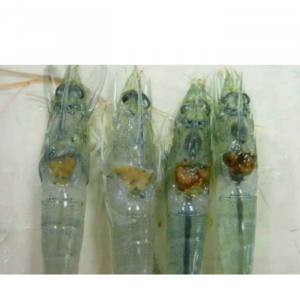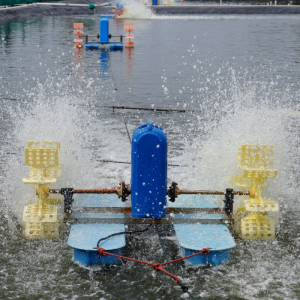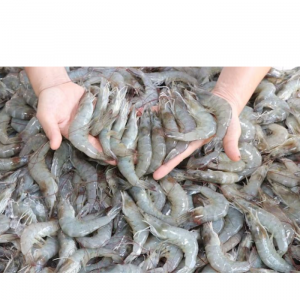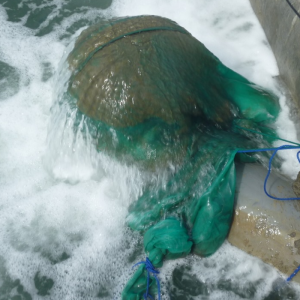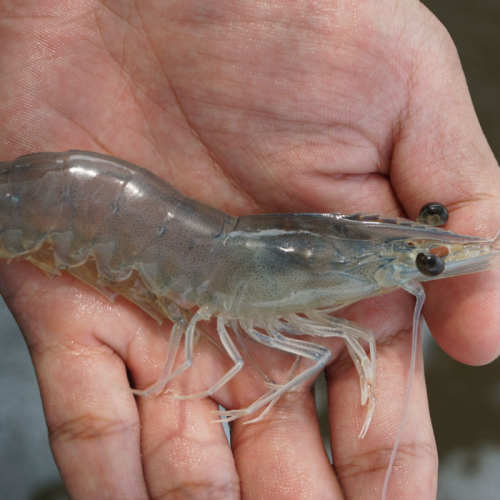
Relationship Between Vannamei Size and Consumption of Bioflocs
| Mon, 26 Jul 2021 - 16:57
The consumption of probiotics (bioflocs) was positively related to the size of vannamei shrimp. However, the level of bioflocs consumption is not the same for all growth stages of white shrimp.
Biofloc biotechnology (BFT) is considered as one of the most promising methods for the sustainable development of the intensive shrimp farming industry as this system not only helps to maintain the water quality at a good standard but also The source of microbial biomass provided as supplementary feed allows the production of shrimp culture at high densities with minimal or no need for constant water changes, minimizing environmental impact and improving biosecurity. learning in farming by limiting the entry and spread of diseases.
Based on the adjustment of the carbon/nitrogen ratio, the heterotrophic bacteria present in the bioflocs are able to assimilate inorganic nitrogen from an additional source of organic carbon. The microorganisms present in the system are an important source of fats and proteins; however, laboratory observations have shown that bioflocs consumption is not the same for all stages of shrimp, moreover there is variation depending on the time of rearing.
Therefore, the researchers hypothesized that there is a strong relationship between the consumption of probiotics (bioflocs) and the size of farmed shrimp, and understanding how much biomass there is. microorganisms can be absorbed into the muscle, tissue, meat of shrimp is absolutely necessary.
Read more: Intestinal Bacteriome of Pacific White Shrimp in Biofloc, Clear Water System
In this study, both experimental flowmeters biological microorganisms (bioflocs) of white shrimp ( L. vannamei ) with respectively 0,01 g size, stocking density 2,000 / m 3 in Central period (40 days) and 0,80g, stocking density of 400 individuals / m 3 in growout period (60 days). Molasses was added to adjust the C:N ratio to maintain 6:1.
The results of the analysis indicate that there is a positive relationship between the size of vannamei shrimp and the consumption of microorganisms (bioflocs). Bioflocs contribute 22 – 43% C and 0 – 43% N in the nutritional composition of shrimp meat at the nursery stage (0.01g), while at the grow-out stage (0.80g), the contribution of bioflocs varied from 63 to 100% C and 35 to 86% N. In this study, it was hard to believe that nitrifying bacterial activity was maintained at a good level throughout the duration of both of experiment.
In addition, the difference in abundance of algae also indicates that there is a preference for microbial consumption because of larger shrimp size. Therefore, the results of this study confirm the hypothesis that the consumption of probiotics (bioflocs) as an additional natural food source depends on the size of the shrimp.
Bioflocs technology can be used to reduce concentrations of ammonium, a toxic nitrogen compound, by stimulating the growth of heterotrophic bacterial communities. When ammonium concentrations reach dangerously high levels, the addition of a carbon source, such as molasses, allows the growth of heterotrophic bacteria that incorporate ammonium into their biomass as proteins. However, the rate of bioflocs formation is not only related to the additional carbon source (molasses) but also to the type of aeration used.
Read more: Ten Easy Steps Towards Biofloc Production of Shrimp or Tilapia
Besides serving as an additional feed source, bioflocs also have effects on other aspects related to shrimp health such as disease resistance. In the system, there is always the existence of different communities of microorganisms such as cyanobacteria and flagellates, the natural competition of these species can affect shrimp growth and survival, rather Changes in water quality parameters, nutrients affect yield as well as the predominance of beneficial microbial groups.
Several studies have demonstrated that the consumption of microorganisms and their biofilms (bacteria and protozoa) contained in bioflocs is an important source of proteins and lipids that contribute to a decrease in feed conversion rates. feed (FCR) significantly improves production costs. During the rearing of vannamei shrimp (L. vannamei) at different stages, it can be observed that larger shrimp spend more time selecting preferred microorganisms (food) than.
On the other hand, shrimp with small size sometimes cannot interact much with microorganisms (bioflocs) leading to difficulty in consumption as well as poor growth.
Overall, the results from the above study have contributed important information for better management of natural and artificial feeds as well as for the intensive production of vannamei shrimp using bioflocs technology.
Source: Tepbac.com













